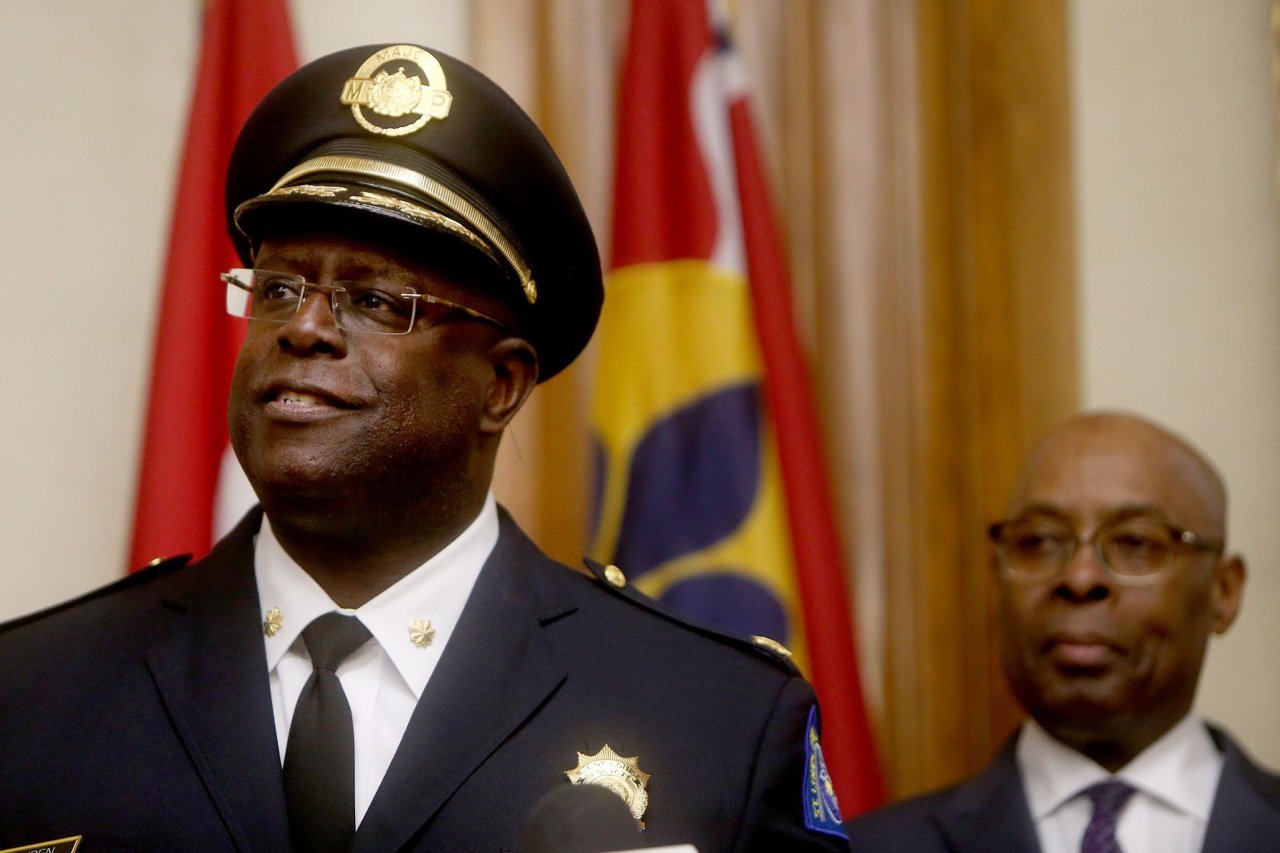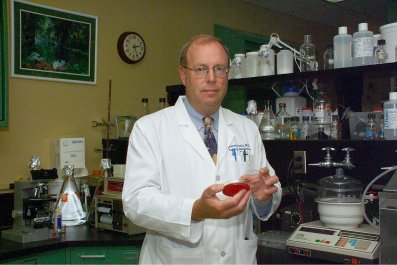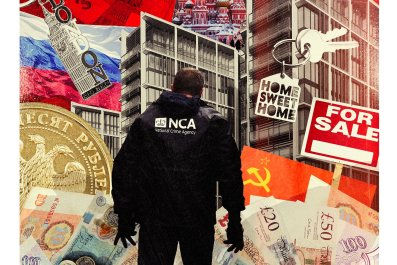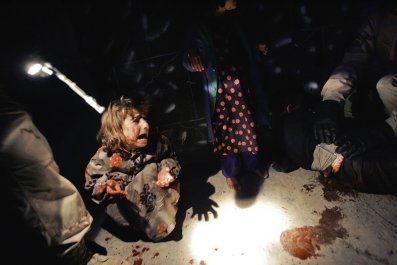Updated | Earlier this year, after John Hayden had taken over as the head of the St. Louis Metropolitan Police Department, the local paper advised him to "bring a broom." Which was apt. The new chief inherits a department swept up in scandals over race, brutality and corruption. Meanwhile, the murder rate is frighteningly high. Last year, 205 people were killed, the most in 23 years, and the city is on its way to becoming the murder capital of America for the fourth year in a row.
But Hayden, a well-liked, 30-year veteran of the force—and the department's fourth black police chief—has a plan to crack down on crime while trying to alleviate racial tensions. Among other things, his plan involves hiring external investigators to probe police shootings, to allay public fury over internal mistakes. Coming from someone else, the moves might not seem sincere, but Hayden is known for his willingness to criticize fellow officers over excessive force and the spate of shootings of unarmed black men. He's also pushing the department to meet community members face-to-face, –especially in the city's most violent areas, where he sometimes works on street corners with his folding table and laptop.
"In some ways, I think law enforcement nationwide has been a contributor to the tension that's there," Hayden tells Newsweek. "If we [police] are not personable, if we're not talking to people, if we are focused on statistics and focused on arrests only, there's a lack of empathy that goes toward exacerbating that tension."
Over the past few years, the St. Louis area has been the epicenter of the problem. In 2014, a white police officer shot and killed Michael Brown, an unarmed black teenager in nearby Ferguson. A grand jury declined to press charges against the cop, Darren Wilson, sparking protests and drawing national attention. Three years later, a judge acquitted another white officer, Jason Stockley of the St. Louis Metropolitan Police Department, in the fatal shooting of Anthony Lamar Smith, who was black. Prosecutors alleged that Stockley planted a gun in Smith's car and tried to prove premeditated murder with a dashcam tape on which the officer says he was "going to kill this motherfucker." His acquittal brought renewed scrutiny to the city's police department, as thousands marched in the streets. The police sent hundreds of them to jail.
Hayden remembers those incidents well, and he says they will guide his leadership. "I'm starting with my commanders, and we're looking at what went well and what didn't go well during the protests," he says. The goal is to allow people to express their freedom of speech without much intervention. Yet he stressed there are extraneous circumstances, as when a protester threw a brick at an officer and broke his jaw the weekend after the Stockley verdict. "There were a thousand people out in the streets that night," he said. "There's not a lot of best practices, if you will, when you're that outnumbered."
Hayden also says he's going to be tough on cops when they make mistakes. He supports hiring an external body to probe police shootings, instead of internal investigators. It's a move protesters demanded but one that law enforcement often criticizes. David Klinger, a professor of criminology at the University of Missouri-St. Louis, says the department has better resources than any external agencies. "Who knows how to investigate homicides," he asks, "better than homicide investigators?"
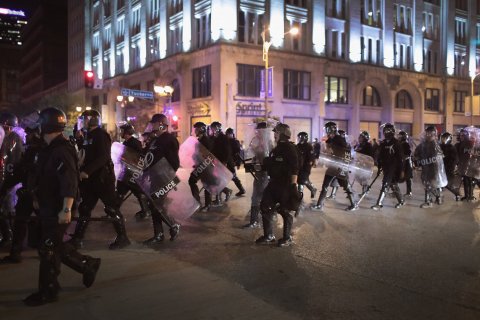
Perhaps, but Hayden has seen some of the department's mistakes firsthand. For years, he led investigations for internal affairs, which resulted in the terminations, prosecutions and even convictions of his peers. Those cases involved officers assaulting subjects, falsifying police reports and theft. As St. Louis Mayor Lyda Krewson puts it, "Hayden supports cops, but he also understands that they don't always get it right."
Despite his tough stance on his peers, the chief is still liked by the officers he will lead. Klinger, who says he's spoken to several people inside and outside of the department about Hayden, finds him "thoughtful" and "very precise in his thinking." He adds, "It is my understanding that the rank and file appreciate [him]."
Sergeant Heather Taylor, the president of the union representing the department's black officers, says she endorsed Hayden months ago because he was someone who was not going to "bring people to an uproar" or downplay mistakes that left locals feeling dejected. "The public knows what a mistake is," she says. "A mistake is not arresting protesters or journalists. That's not a mistake, that's a crime."
Residents and protesters also seem cautiously optimistic. Anna Crosslin, a member of the Citizen Advisory Committee involved in selecting a chief, says St. Louisans have taken a "wait-and-see attitude about the ability to be able to make long-term, successful change." The Reverend Darryl Gray, a pastor who organized protests after the Stockley verdict, agrees. "As proud as we are to have an African-American police chief," he says, "no one gets a free pass."
Hayden hopes his focus on "community policing"—going door to door and meeting with residents in high-crime areas to regain their trust—can convince St. Louisans that he's serious about reducing crime and listening to their concerns. It's hard to measure how effective this strategy is, but the new chief says he's confident it will make the community less antagonistic toward police. "People shouldn't be afraid of us," Hayden says. When police officers are "all business, there's no smiling, there's no talking to people, that creates a barrier that I'm hoping to knock down," he says.
But will it make them safer? The new chief certainly hopes so. The city's homicide count is at its highest in more than 20 years. Two hundred and five people were killed in St. Louis in 2017, bringing the murder rate to an estimated 65.83 homicides for every 100,000 people—more than 12 times the national average.
Hayden had to deal with the carnage in his first day on the job. On January 1, the department was called to the scene of a double murder that had "all the makings of drug-related activity," he says. The victims were two black men, which was in line with the previous year's grim statistics: 192 black victims out of 205 homicides.

To combat these harrowing figures, Hayden has zeroed in on a small region of the city that makes up half its crime––something he says is "not a hot spot because it's never been cool"––where he will boost resources and patrols. "We're trying to save your kids' lives," he says. "If those young men came to the conclusion [that] the only way they can support themselves is criminal activity, I will invite social services organizations that have jobs for them."
Whatever happens during Hayden's tenure, St. Louisans won't be the only ones paying attention. As Beth Huebner, a criminology professor at the University of Missouri-St. Louis, puts it, "The nation is watching St. Louis."
Update: This article originally cited information provided by the director of the Department of Public Safety of St. Louis that was incorrect. The director said 204 of last year's 205 homicide victims were black. The correct breakdown, as provided by the police department, is 192 black victims, one Hispanic victim and 12 white victims.
This article has also been updated to reflect the version that will appear in the March 9, 2018 version of the magazine.



